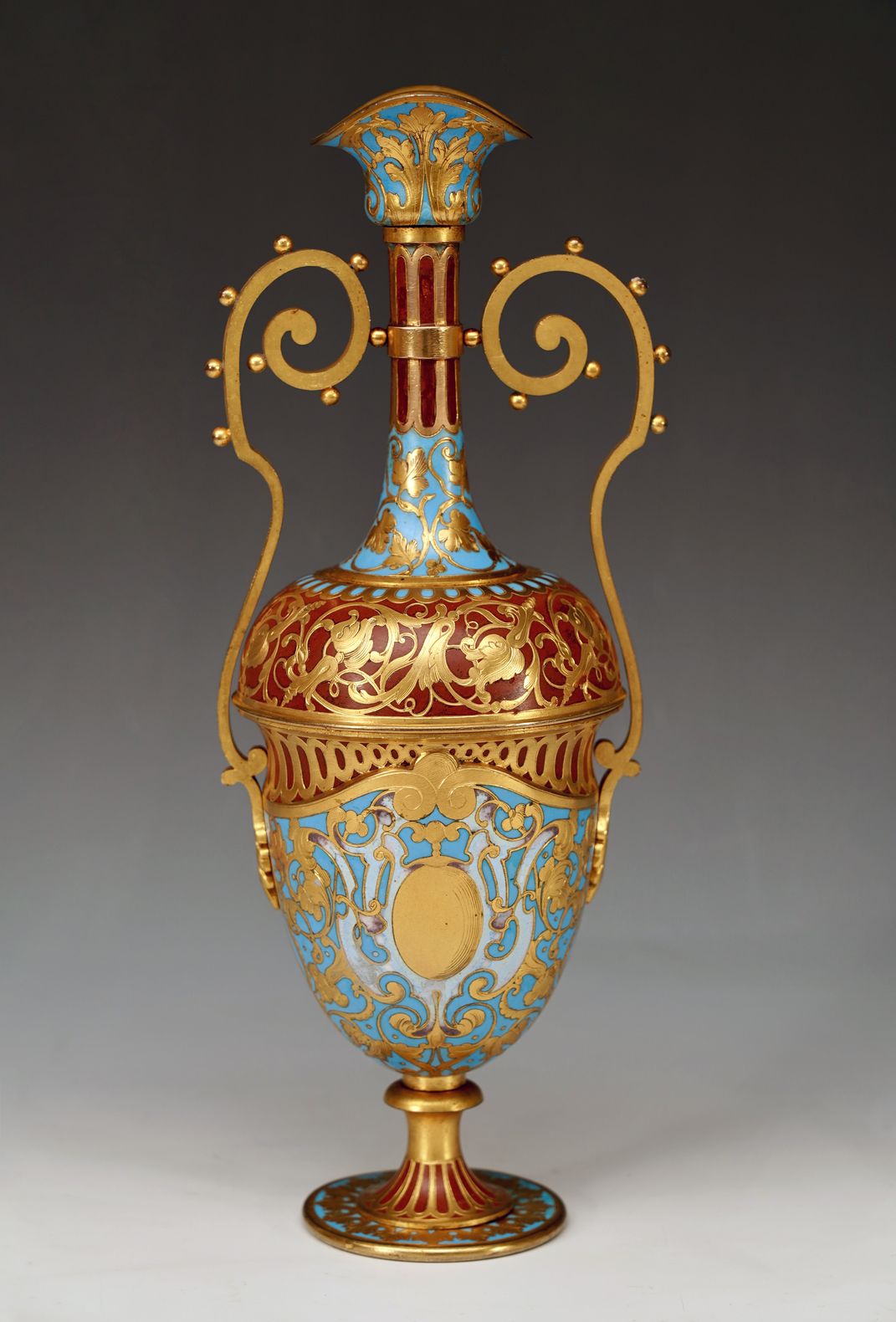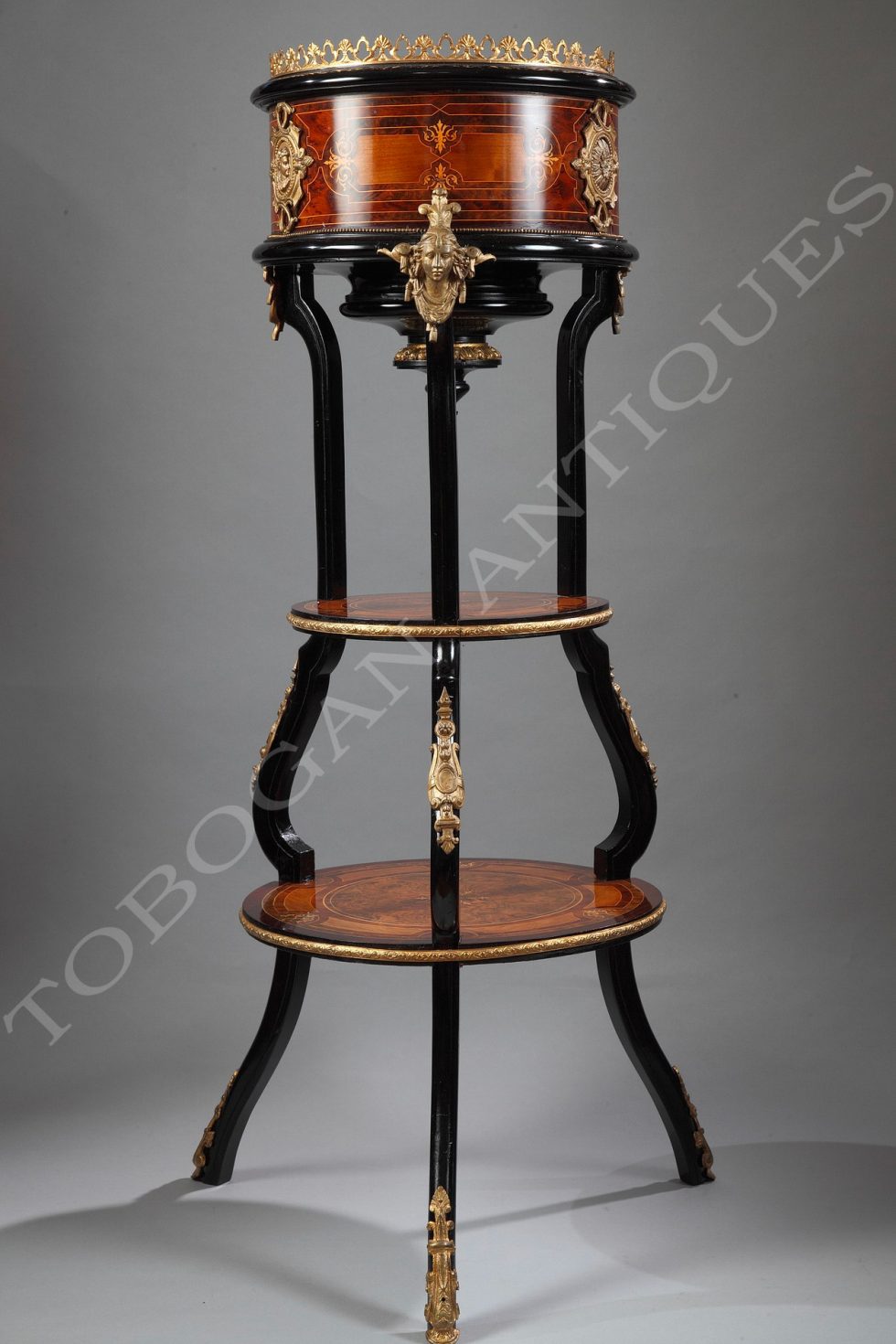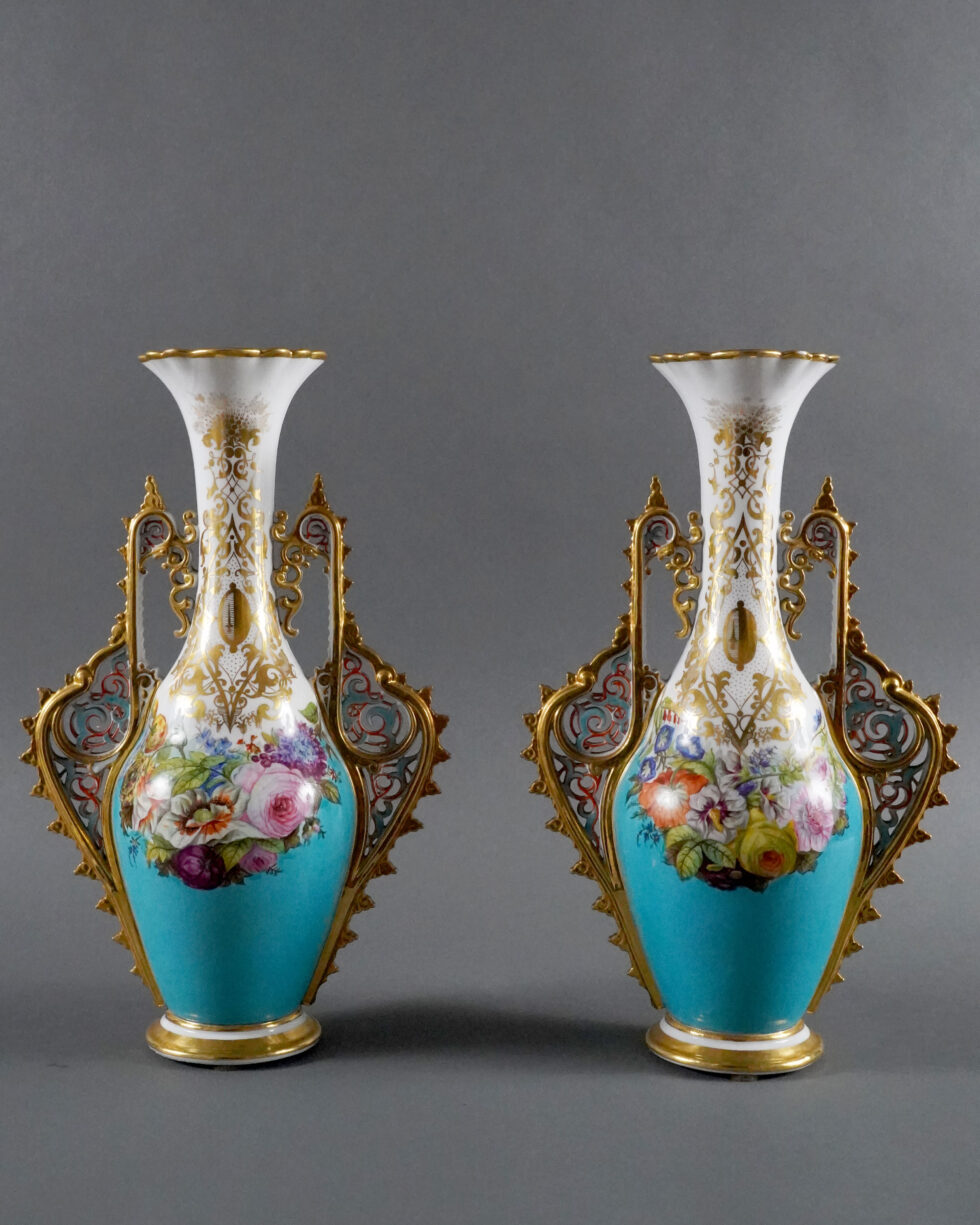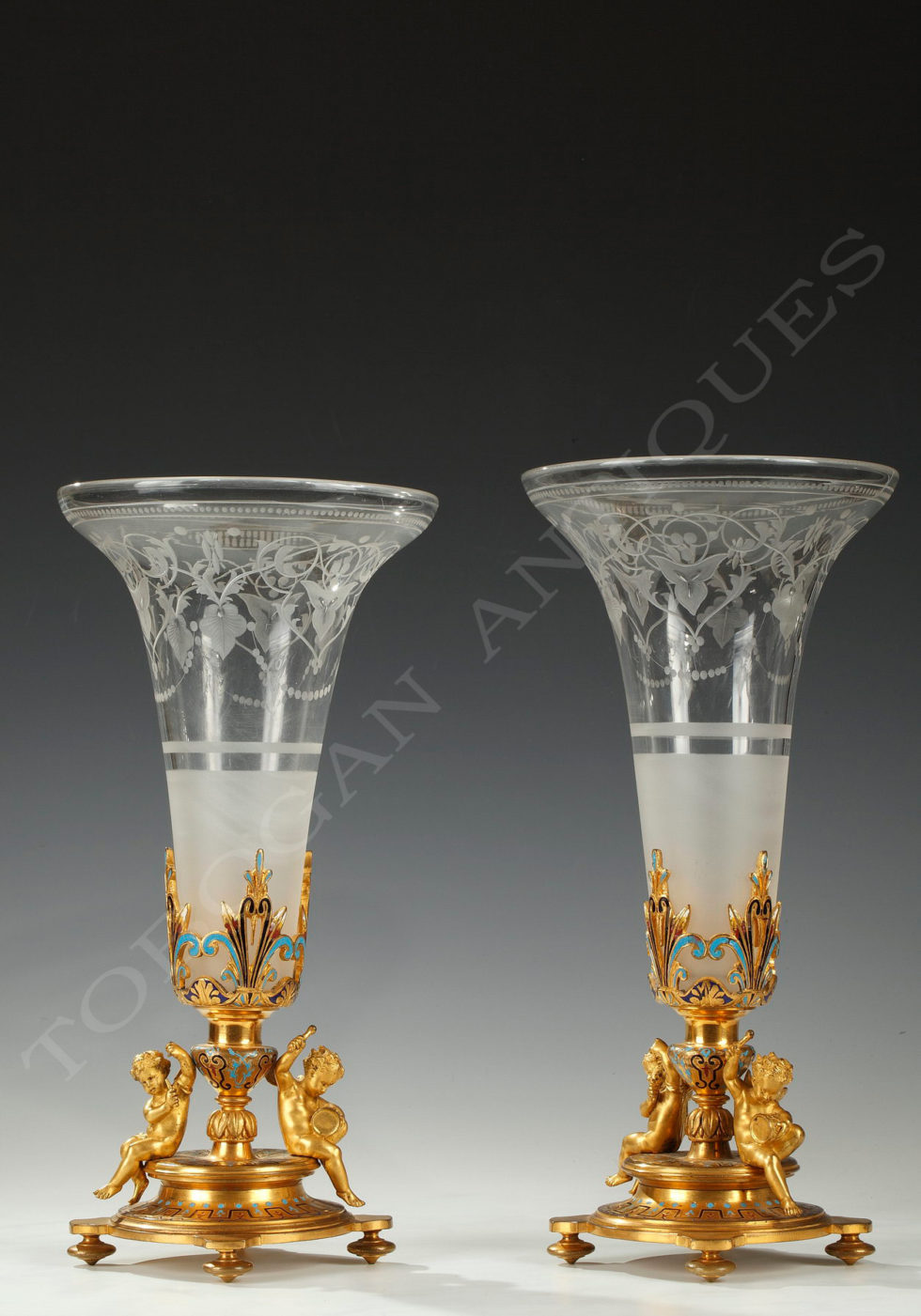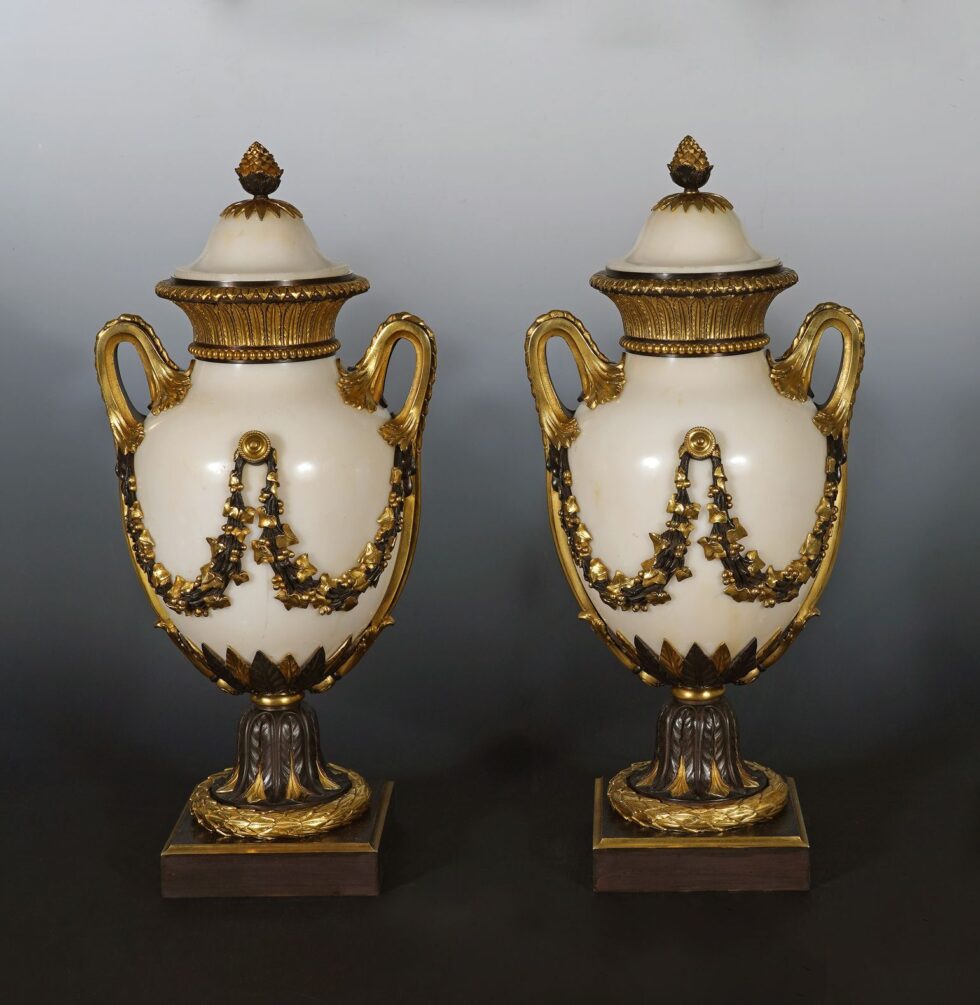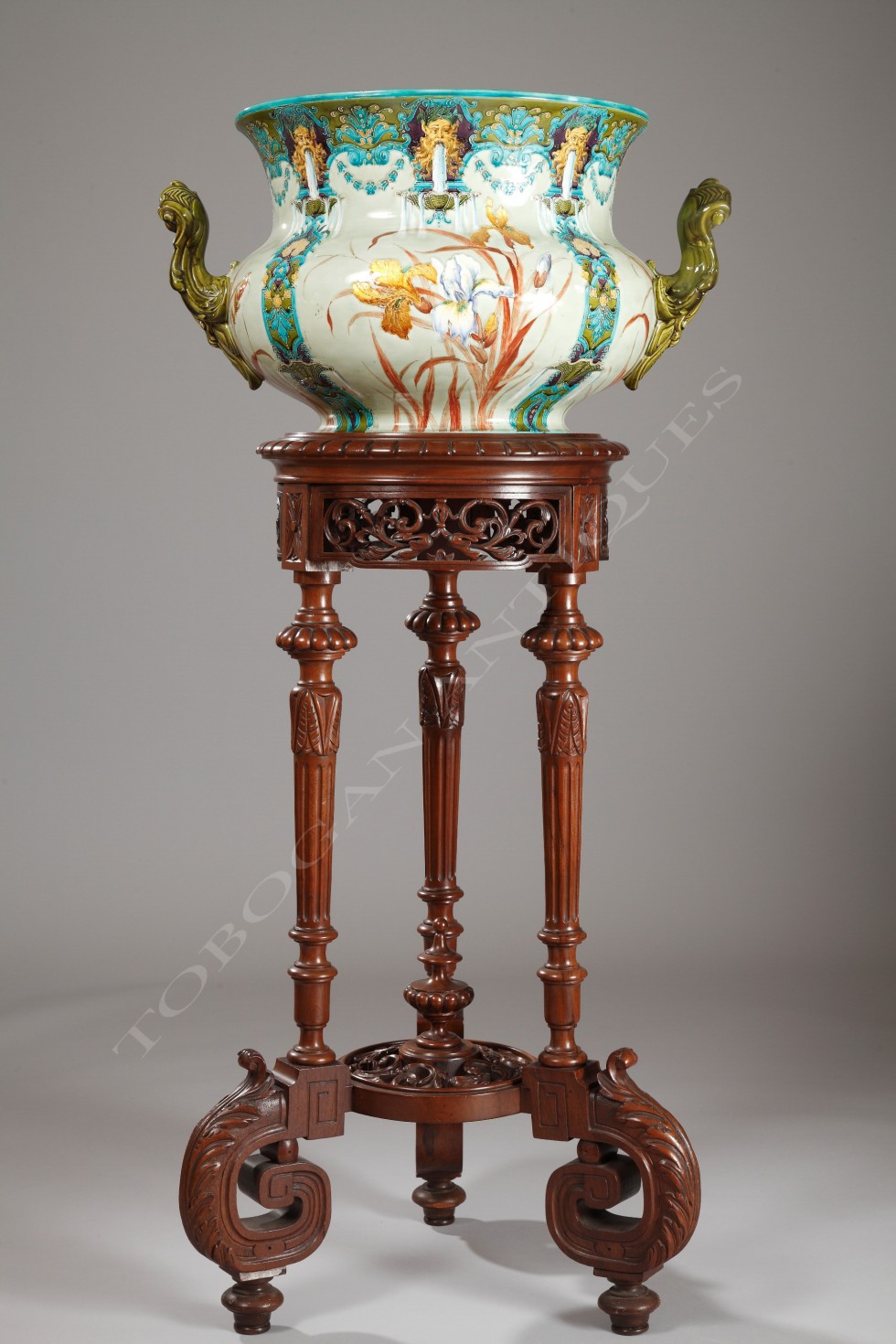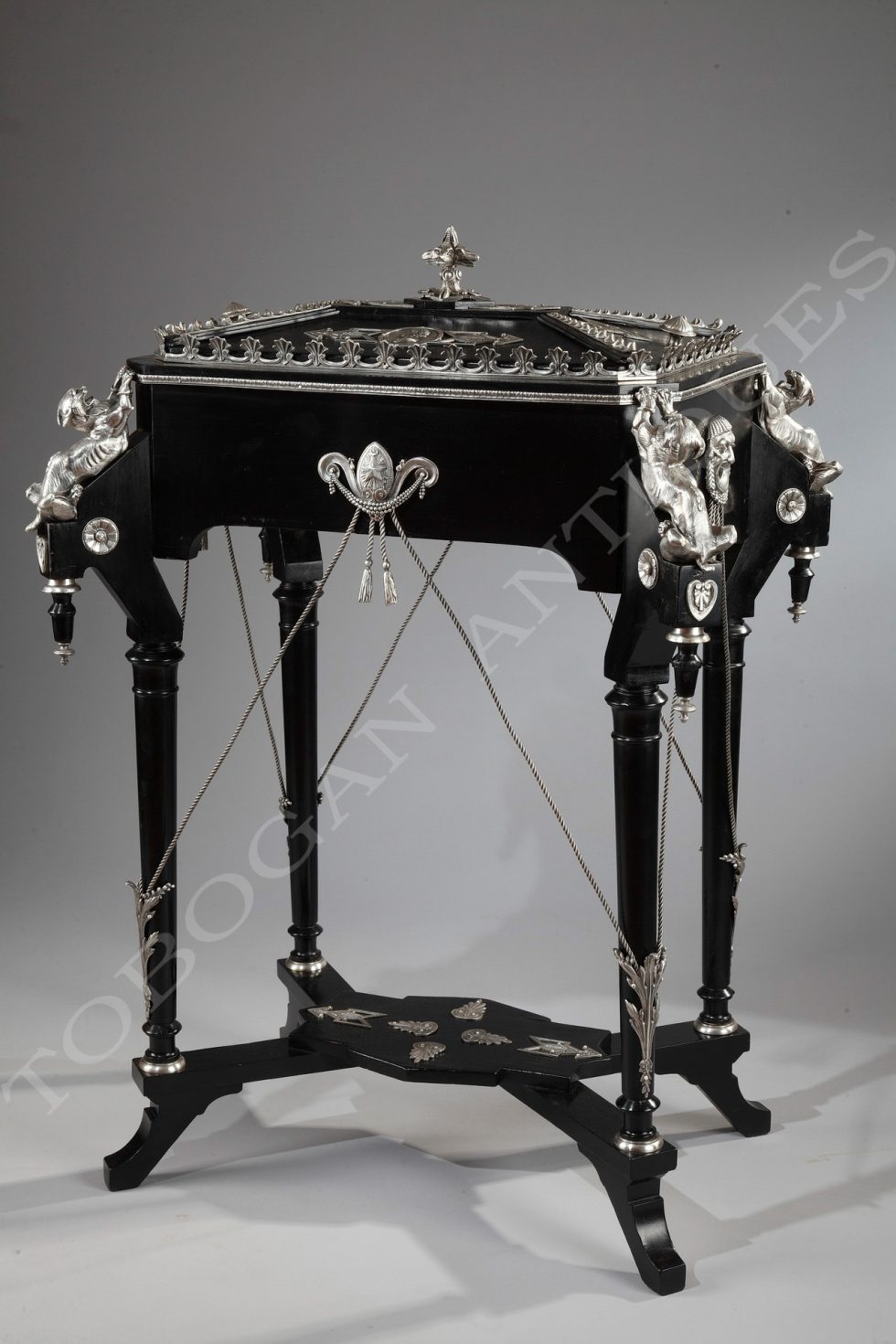Ref. 1845
F. Barbedienne
Bronze-caster
(1810-1892)
Charming Ewer
France
Circa 1870
« Cloisonné » enamel, Gilded bronze
Signed F. Barbedienne & Cie
Height : 31,5 cm (12,4 in.) ; Width : 12 cm (4,7 in.) ; Depth : 10,5 cm (4,1 in.)
Charming baluster-shaped ewer in gilded bronze decorated with red and blue polychrome cloisonné enamel. Two beaded handles connect the body to the slender neck, ending in a flared pouring spout, and it rests on a circular piedouche. The whole is decorated with abundant engraved decoration of foliage interlacing.
BARBEDIENNE AND THE CLOISONNÉ ENAMEL
Ferdinand Barbedienne continuously innovated and he revived the use of enamel on art works during the second half of the 19th century. The Sèvres Manufacture enamel workshop had ever tried it in 1854-1855, but Barbedienne was the one who succeeded to join enamel to an industrial decorative objects production. From 1858 “At Mr Barbedienne’s, enamels in copper ornaments have got their former prestige back” (Les bronzes de la Maison Barbedienne, C. Simon, in L’Art du XIXe siècle, 1858, n°21, p. 252). The Barbedienne Company had now an enamel workshop where objects ornamented with oriental style or medieval style enamels were made. Four years after, Barbedienne’s cloisonné opaque enamels are noticed during the 1862 Universal Exhibition. Barbedienne was awarded three medals in three different categories : ‘Furniture’, ‘Silversmith work’ and ‘Artistic bronzes’ especially for the combination of bronze with enamel (oriental style cup, Compiègne Castle, Inv. C. 71-122).
The technique used to make these vases is different from the traditional one used for cloisonné enamel. In fact in Barbedienne’s productions the cloisonné is not welded to the object but is directly cast with it. The cloisonné forms part of the object and this innovation enabled to have a more refined and softer decoration.
The colors used by the Barbedienne Company also relate to the success of its enamels and the shades are praised as they “have more than the others these qualities of sparkle and richness that the range of colors of Gothic and Chinese enamellers also have” (in Gazette des Beaux-Arts, 1er décembre 1862, p. 542). This was made to create original enamelled creations either with Chinese or Japanese inspiration with a naturalistic decoration, or with Persian or Indian inspiration with a more stylized decoration.
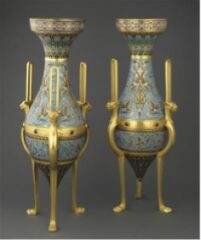
Pair of ornamental vases,
Orsay Museum, Paris.
Biography
Ferdinand Barbedienne (1810-1892) : he created and headed at n°30 boulevard Poissonnière in Paris one of the most famous 19th century artistic bronze casting companies. Awarded with two Council Medals at the 1851 London Universal Exhibition, the Barbedienne companie won at the 1855 Paris Universal Exhibition a medal of honour and eleven cooperator’s medals for the work of his co-workers, such as his designer Louis-Constant Sévin (1821-1888) and his chaser Désiré Attarge (c.1820-1878). At the London Universal Exhibition of 1862 Barbedienne won medals in three different categories : ‘Furniture’, ‘Silversmith work’ and ‘Artistic bronzes’, combining for some pieces with onyx marble and enamel. Barbedienne was not only, with the Parisian silversmith Christofle, one of the leaders of the French Aesthetic Movement in decorative arts, but also the first artist to produce the famous cloisonné enamels (see « L’émaillerie moderne », Gazette des Beaux-Arts, Alfred Darcel, t. XXIV, janv.-juin 1868, p° 75-84). At the 1867 Universal Exhibition in his capacity as member of and speaker for the Jury, he was non-contestant, but exhibited nevertheless with great success cloisonné and champlevé enamelled pieces. Barbedienne was made an Officer of the Légion d’Honneur in 1867 and Commander in 1878 when he was compared with “a prince of industry and the king of bronze casting”. His glory did not decline with the passage of the time for at the Universal Exhibition of 1889 the critics thanked Barbedienne for the example he set for other bronze-casters by the perfection of his bronzes.
Bibliography
– L’Art en France sous le Second Empire, Exposition Grand-Palais, Paris, 1979, p. 148-149.
– L’émaillerie moderne, Alfred Darcel, in Gazette des Beaux-Arts, t. XXIV (janvier-juin1868), p. 76.
– De l’Impresionisme à l’Art Nouveau – Acquisitions du Musée d’Orsay 1990-1996, Exposition Musée d’Orsay, Paris, 1996, p. 91.
– Les bronzes de la Maison Barbedienne, C. Simon, in L’Art du XIXe siècle, 1858, n°21, p. 252.
– Gazette des Beaux-Arts, 1er décembre 1862, p. 542.
Contact us
Tobogan Newsletter
If you want to be up-to-date with our new acquirings you can sign up to our newsletter.

